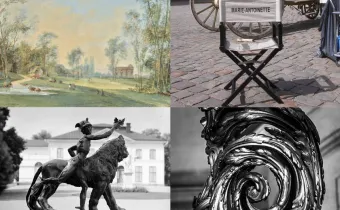The exhibition
As the seat of royal power, the Palace of Versailles received visitors from all over the world, who fuelled the Court’s fascination with the various other civilizations it was beginning to discover.
These encounters contributed to changing the tastes of the French Kings and the entire Court, thereby fostering the birth of new trade exchanges – furniture, lacquerware, porcelain, precious stones; exoticism was everywhere.
At the same time, acquiring scientific knowledge about the world became a political issue for Louis XIV and his successors: their initiatives in the fields of botany, zoology, astronomy, or in launching great expeditions, and so on, enabled the Kings of France to highlight their modernity and power.
The various paintings, decorative art objects, tableware, books and manuscripts on show will enable visitors to understand how the Palace of Versailles and its Court became the launchpad for relations between East and West in the 17th and 18th centuries.
A selection of masterpieces from the collections of the Palace of Versailles will be presented, along with major works from other French collections (Louvre Museum, National Library of France, Museum of Decorative Arts, etc.), and items on loan from renowned international institutions, such as the British Royal Collection.
EXHIBITION CIRCUIT
A Palace open to the world
The first part of the exhibition explores the cultural diversity of visitors who came to Versailles from all over the world, marking the birth of modern-day tourism in the 17th century. Based on the principle that King Louis XIV should be constantly visible, the palace was open to visitors and became truly open to the world.
The appeal of this “unrivalled palace” and its huge gardens designed by Le Nôtre resulted in a relentless parade of travellers, princes and ambassadors, artists and merchants, architects and scientists, philosophers and adventurers from every continent. Versailles acted as a key diplomatic instrument in the policy of promoting the Crown’s grandeur abroad, by amazing special ambassadors and foreign royalty with grand ceremonies.
The revelation and dream of the East: exoticism at Versailles
Here, the exhibition focuses on exchanges with the East. Europeans were fascinated by these special ambassadors who came from afar, arousing the curiosity of collectors, inspiring artists and developing society’s taste for the exotic. As of this time, the East became an object of dreams, interpreted through a French lens. Versailles became the focal point of East-West artistic exchanges, resulting in the development of Turkish and Chinese decorative art and objects.
Between Heavens and Earth: discovering the world
The third section of the exhibition will highlight the scientific policy implemented by France based on the country's thirst for discovery and knowledge about the terrestrial and celestial worlds.
In the 17th century, driven by Colbert, the royal Court became aware of the diplomatic, strategic and commercial importance of developing a genuine scientific policy. The creation of the French Academy of Sciences in 1666 brought together the greatest scientists in Europe, and led to the first experiments with hot-air balloons.
Astronomy, botany, zoology, geography and so on; the discoveries that would revolutionise people’s conception of the world and open up infinite opportunities for modern nations were now made on a global level, in a context of emulation and rivalry between nations. With this in mind, the Versailles estate became a microcosm of the world, bringing together plants and wildlife from every corner of the globe, at a time when major expeditions to distant lands were being launched.
Exhibition curators
Hélène Delalex, Curator, Furniture and Decorative Arts at the musée national des châteaux de Versailles et de Trianon
Bertrand Rondot, Chief Curator, Furniture and Decorative Arts, at the musée national des châteaux de Versailles et de Trianon





